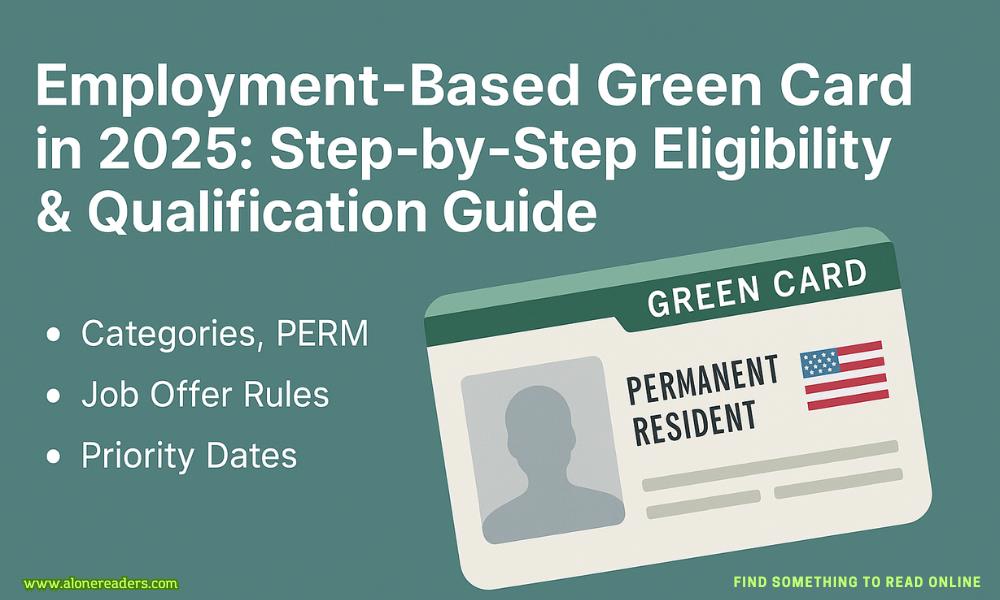
An employment-based (EB) green card allows foreign nationals to become U.S. permanent residents through a qualifying job offer or career achievement. In 2025, the U.S. continues to rely heavily on employment-based immigration to address labor shortages in high-skill, healthcare, STEM, and other critical sectors. However, qualifying requires navigating a complex, tiered system of categories, certifications, and processing stages.
EB-1: Priority Workers
This is the fastest path with no labor certification requirement. It includes:
EB-2: Professionals with Advanced Degrees or Exceptional Ability
This is for applicants with a master’s degree or higher, or those who demonstrate exceptional ability in their field. A labor certification (PERM) is required unless applying through a National Interest Waiver (NIW).
EB-3: Skilled Workers, Professionals, and Other Workers
This is the most common route but often has longer wait times. It includes:
EB-4: Special Immigrants
This includes religious workers, Afghan/Iraqi translators, and other narrowly defined groups.
EB-5: Immigrant Investors
Applicants must invest at least $1,050,000 (or $800,000 in a Targeted Employment Area) and create at least 10 U.S. jobs.
Step 1: Secure a Job Offer or Qualify for a Waiver
Except for EB-1A and some NIW cases, most applicants need a full-time, permanent job offer from a U.S. employer. The employer must be willing to sponsor the green card and complete the required filings.
Step 2: Labor Certification via PERM (if applicable)
For EB-2 (non-NIW) and EB-3 cases, the U.S. employer must first obtain a PERM labor certification from the Department of Labor (DOL). This certifies:
This process can take 6–12 months or more, depending on whether the application is audited.
Step 3: File Form I-140, Immigrant Petition for Alien Worker
Once PERM is approved, or for categories that don’t require PERM (like EB-1A or NIW), the employer (or applicant in NIW/EB-1A) files Form I-140 with USCIS. This form establishes that:
USCIS may request additional documentation or issue a Request for Evidence (RFE) if anything is unclear.
Step 4: Track Your Priority Date and the Visa Bulletin
Each employment-based category is subject to annual visa caps, and there are country-specific limits. Applicants from high-demand countries like India and China may face long waits.
The “priority date” is set when the PERM is filed (or the I-140, if PERM is not needed). Each month, the Visa Bulletin (issued by the Department of State) shows which priority dates are eligible for final processing. In 2025, EB-1 is expected to remain current for most countries, while EB-2 and EB-3 will likely have modest backlogs.
Step 5: File Form I-485 (Adjustment of Status) or Consular Processing
Once the priority date is current, the final step is applying for the green card:
Concurrent filing (I-140 and I-485 together) is allowed if the visa category is current at the time of filing.
For EB-1A (Extraordinary Ability):
For EB-1B (Outstanding Researchers/Professors):
For EB-2 NIW:
For EB-3:
Job Location and Wage Determinations:
In 2025, wage levels are more strictly enforced, and remote work cases may face extra scrutiny regarding job location and prevailing wage calculations.
Company Financials and Bona Fide Job Offers:
USCIS increasingly examines employer tax records, especially for startups or smaller companies. Employers must show ability to pay from the date of PERM filing onward.
Educational Credential Evaluation:
Degrees earned outside the U.S. must be evaluated by a recognized credential evaluation agency to ensure they meet U.S. equivalency standards.
Public Charge Considerations:
Although less emphasized in 2025 compared to past years, applicants must still show that they are unlikely to become a public charge. This is usually met through proof of employment and financial independence.
Misclassification of Job Title or Requirements:
Even minor discrepancies between PERM requirements and actual job descriptions or I-140 filings can lead to denials or RFEs.
Employer Withdrawals or Layoffs:
If the sponsoring employer withdraws the petition or lays off the worker before green card approval, the case may be terminated unless portability rules (for I-485s pending 180+ days) apply.
Over-reliance on Premium Processing:
Premium Processing may speed up I-140 adjudication, but it does not affect priority date movement or PERM timelines.
Country Backlogs:
Applicants from India, China, or Philippines should plan for longer timelines or consider alternate strategies like EB-1A or EB-2 NIW to bypass employer sponsorship.
Qualifying for an employment-based green card in 2025 demands far more than just having a job in the U.S. It requires selecting the right category, preparing precise documentation, aligning employer support, and navigating ever-changing immigration policies. Applicants should assess their long-term goals, potential for EB-1 or NIW qualification, and country-specific wait times before proceeding.
Understanding the timeline, categories, and specific evidentiary standards will dramatically improve your chances of success.